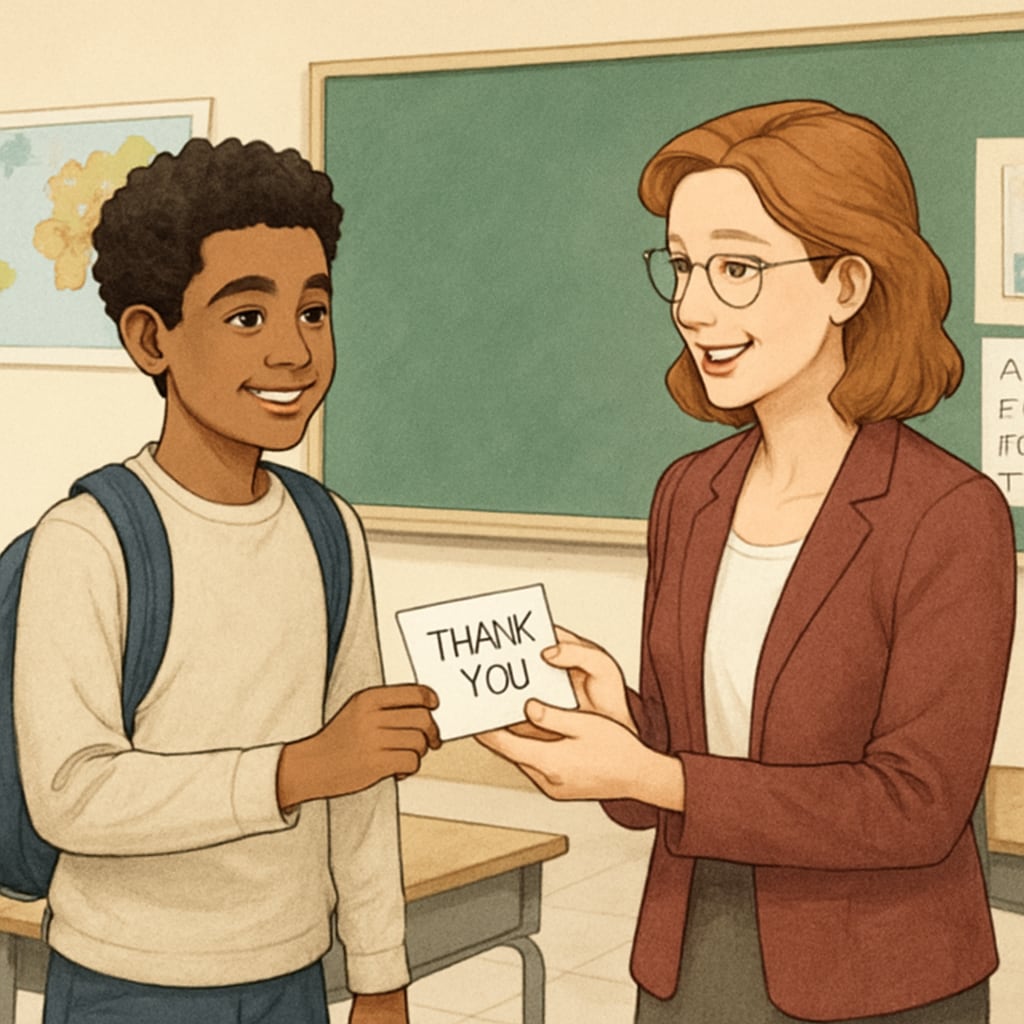In the realm of K12 education, moments of genuine connection and appreciation often reveal the profound impact of teaching. One such moment—a student’s heartfelt expression of gratitude to their teacher—underscores the transformative power of classroom interactions and mutual respect. When students feel seen and valued, their gratitude becomes a testament to the importance of creating a nurturing educational environment. This article delves into how sincere student appreciation can highlight the essence of teacher influence and foster meaningful classroom interactions.

How Gratitude Reflects the Core of Student-Teacher Bonds
Gratitude in education is more than an act of politeness; it’s a powerful indicator of the emotional connection between students and teachers. For instance, imagine a student expressing thanks after a lesson that clarified a complex concept or helped them overcome a personal challenge. Such moments show that teaching goes beyond imparting knowledge—it’s about empowering students and making them feel truly understood.
Research supports this phenomenon. According to a study published in Britannica, students who feel valued and respected by their teachers exhibit higher levels of engagement and motivation. Gratitude, in turn, reinforces the teacher’s role as a mentor capable of shaping a student’s path not just academically, but personally as well.
Building a Warm and Respectful Classroom Environment
Creating an environment where gratitude flourishes requires intentional effort. Teachers must prioritize active listening, empathy, and mutual respect during classroom interactions. When students feel their voices matter, they are more likely to express appreciation for the guidance and encouragement they receive.
Some practical steps include:
- Encouraging open communication and feedback during lessons to make students feel heard.
- Recognizing and celebrating small milestones, such as a student’s improved performance or creative ideas.
- Fostering a supportive atmosphere where students feel comfortable sharing their challenges and triumphs.
These practices, as highlighted by educational theory, contribute to a positive classroom dynamic that benefits both the teacher and the student. They also pave the way for genuine expressions of gratitude.

The Ripple Effect of Gratitude on Educational Impact
Expressions of gratitude often extend their influence beyond the individual. A single student’s appreciation can boost a teacher’s morale, reaffirming their commitment and passion for education. Moreover, such gestures inspire teachers to continue fostering meaningful relationships with their students.
On a broader scale, gratitude can influence the culture of the classroom. When one student openly thanks a teacher, it sets a precedent for positivity and mutual respect among peers. Over time, this creates a ripple effect that enhances collaboration, empathy, and overall classroom harmony.
As a result, educators who embrace and encourage gratitude in their classrooms often witness an improvement in both academic outcomes and emotional well-being.
Conclusion: The Power of Being Seen
The simple act of a student expressing gratitude to their teacher encapsulates the essence of impactful education. It serves as a reminder that teaching is not just about transferring knowledge but also about building relationships and empowering students to reach their potential. By creating a classroom environment rooted in respect, empathy, and genuine interaction, educators can unlock the transformative power of being seen—and appreciated.
As teachers and students continue to engage in meaningful interactions, moments of gratitude will remain at the heart of education, enriching both personal connections and academic success.
Readability guidance: Use concise paragraphs and clear lists to summarize key ideas. Maintain a balance of active and passive voice, while integrating transition words to ensure smooth narrative flow.


